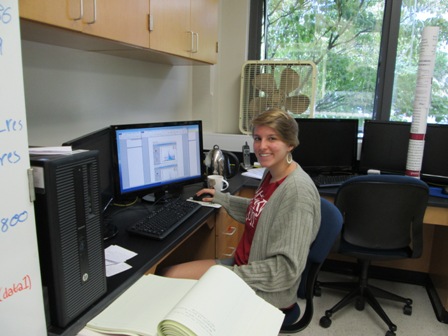Analysis of 25F and 22O Nuclei from a 27Ne Ion Beam
Research Advisor: Dr. Paul DeYoung and Dr. Graham Peaslee
The nuclear structure of a state in a given isotope is determined by which nucleons occupy the bound and unbound energy levels. This state determines the energy of decay, which can be calculated from the energy and momentum of the fragment and neutron. By calculated decay energy, information about an isotope’s nuclear structure can be found. At a National Superconducting Cyclotron Laboratory experiment, a 101.3 MeV/u 27Ne ion beam hit a liquid deuterium target, causing reactions which produced several isotopes. Each of these isotopes decayed, resulting in a nuclei fragment and one or more neutrons. A superconducting dipole magnet bent the path of the fragments into a series of charged-particle detectors. Neutrons from these decays were measured as they interact with arrays of scintillating plastic bars. One of the isotopes produced was 26F, formed by 1-proton stripping from the 27Ne beam. This 26F decayed into 25F + n. By calculating the decay energy for this interaction, resonances of the first neutron-unbound state in 26F, which has not been significantly observed, will be found. Another fragment produced in these reactions was 22O. This can be formed in several ways, two of which were likely for this experiment. Either α-stripping of the 27Ne beam resulted in 23O, which decayed into 22O + n or 2-proton stripping of the 27Ne beam resulted in 25O, which decayed into 22O + 3n. The cross-sections and the nature of decay for both of these processes will be determined.
This material is based on work supported by the Hope College Dean for Natural and Applied Sciences Office and the Hope College Department of Physics Frissel Research Fund.


